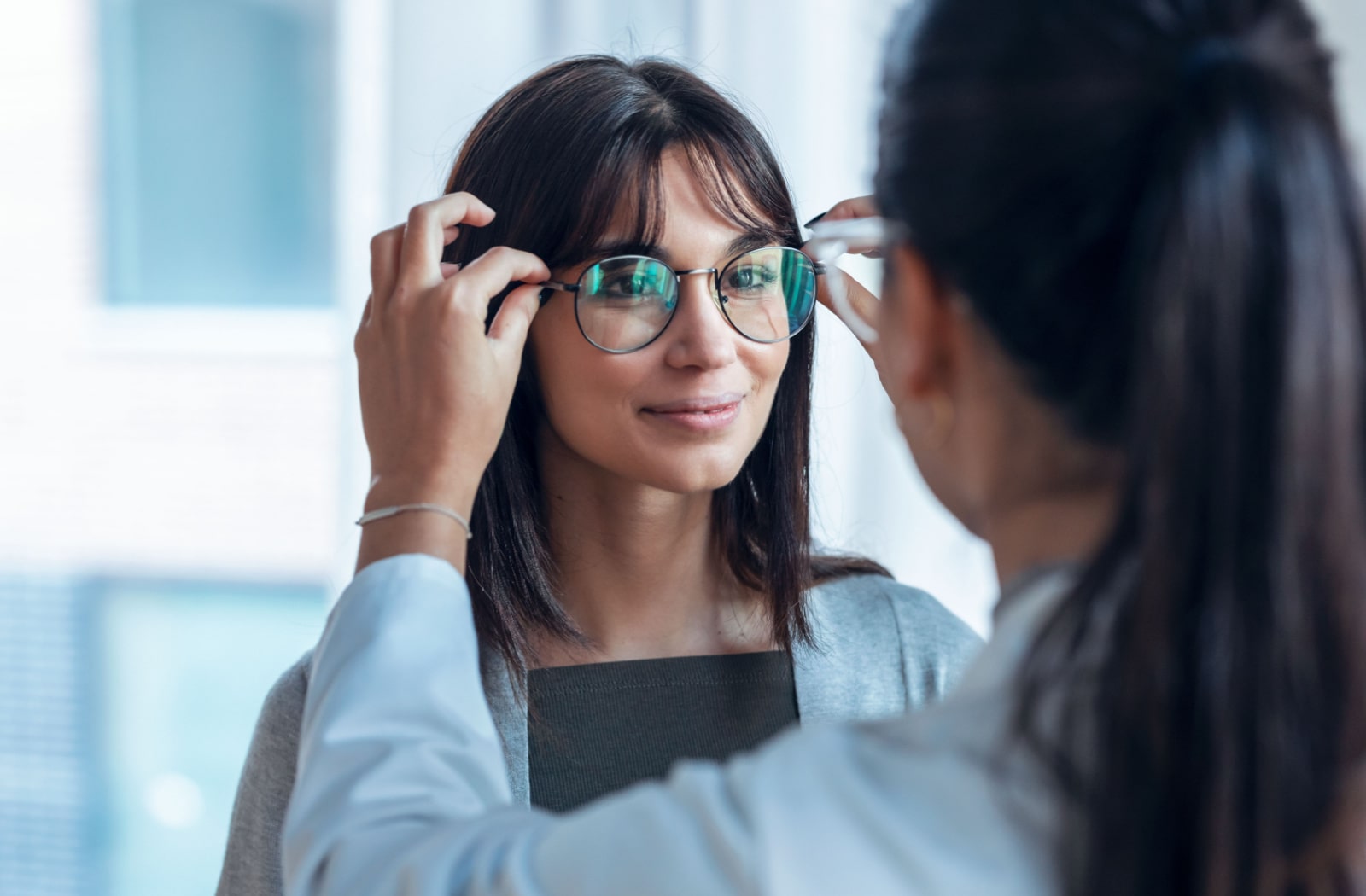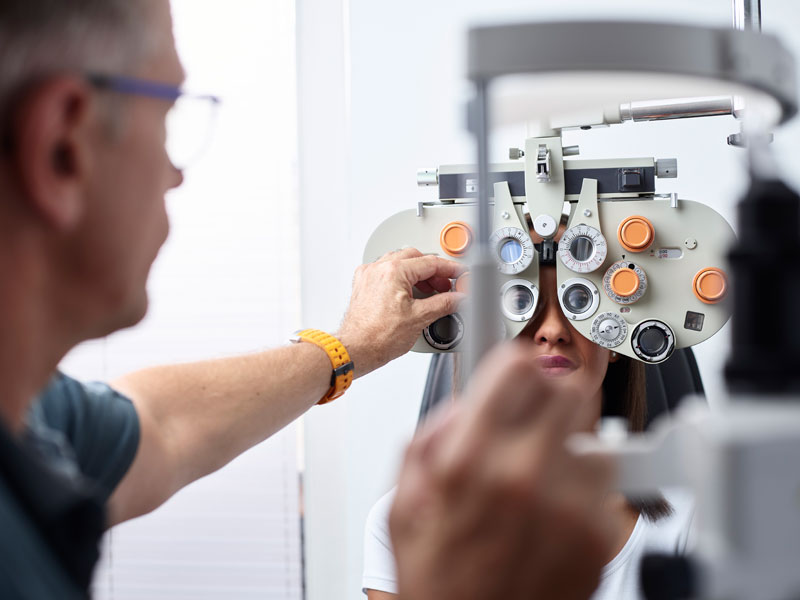Understanding the Duty of Your Eye Doctor in Keeping Vision
Understanding the Duty of Your Eye Doctor in Keeping Vision
Blog Article
Exploring the most recent Technical Innovations in Optometry and What They Mean for Eye Doctors
From the accuracy of Optical Coherence Tomography to the nuanced understandings provided by AI-driven analysis devices, these developments are setting brand-new requirements in person assessment and therapy. As these advancements penetrate the technique, eye doctors are faced with the obstacle of embracing these tools to enhance person end results.
Developments in Diagnostic Devices
Progressing the field of optometry, innovations in analysis tools have reinvented the method eye care specialists analyze and detect ocular problems and visual problems. The past years has actually observed significant technological advancements, allowing even more exact and comprehensive analyses.
Another trick development is the intro of advanced corneal topography systems, which map the surface curvature of the cornea with accuracy. These tools are especially beneficial for suitable call lenses and diagnosing corneal conditions. Furthermore, digital retinal imaging has actually transformed traditional ophthalmoscopy, providing thorough, panoramic views of the retina that help with complete aesthetic evaluations.
The advancement of wavefront aberrometry has actually additionally been crucial, enabling the analysis of refractive errors with unparalleled accuracy (Eye Doctor). This innovation aids in tailoring corrective lenses and enhancing surgical outcomes for refractive surgical procedures. Jointly, these diagnostic improvements encourage eye doctors to deliver superior patient treatment, guaranteeing very early treatment and customized therapy approaches, ultimately improving visual health and wellness results
AI in Individual Administration
Structure on the structure of sophisticated analysis tools, the consolidation of man-made knowledge (AI) in person monitoring stands for a transformative jump for optometry. AI systems are progressively employed to boost performance, accuracy, and personalization in patient care. By assessing substantial quantities of data, AI can identify patterns and predict possible ocular conditions, enabling eye doctors to tailor interventions more efficiently. This capability is important in handling chronic eye diseases such as glaucoma and diabetic person retinopathy, where early detection and continual tracking are essential.
Additionally, AI-driven platforms assist in streamlined person interactions and management procedures. Automated scheduling, digital assessments, and individualized follow-up plans not just boost client satisfaction however also enhance time management for professionals. These systems can triage patients based on the necessity of their conditions, making certain that those in important need get prompt interest.
In addition, AI enhances decision-making by supplying eye doctors with evidence-based recommendations and therapy pathways. By incorporating data from digital health and wellness documents, AI tools offer understandings that notify medical decisions, minimizing the risk of mistakes and improving individual results. As AI remains to develop, its function in individual monitoring will likely expand, improving the landscape of optometric treatment.
Developments in Retinal Imaging
In the world of optometry, retinal imaging has actually witnessed impressive technological improvements that are improving diagnostic abilities and patient treatment. Advancements such as Optical Comprehensibility Tomography (OCT) and fundus photography have actually transformed exactly how eye doctors visualize and evaluate the retina.
Improved imaging modalities like OCT angiography are further refining diagnostic precision. Opticore Optometry. Such improvements facilitate the identification of minute retinal modifications that might signify illness development.
Furthermore, developments in expert system are increasing retinal imaging by making it possible for computerized evaluation of big Visit This Link datasets. These systems aid optometrists in recognizing patterns indicative of pathology, therefore improving analysis precision and effectiveness. Jointly, these developments are transforming retinal imaging into a cornerstone of modern eye treatment, improving end results and Read Full Article broadening restorative opportunities.
Teleoptometry's Growing Duty
Teleoptometry is progressively becoming an essential part of eye care, driven by advancements in data and diagnostic devices. As optometry accepts digital improvement, teleoptometry assists in remote assessments, permitting eye doctors to prolong their services beyond standard limits. This is especially advantageous in underserved and country areas where access to specialized eye treatment is frequently restricted. By leveraging high-resolution video conferencing and progressed retinal imaging, eye doctors can carry out thorough eye examinations from afar, making certain prompt diagnosis and treatment.
The assimilation of synthetic intelligence (AI) additional enhances teleoptometry, enabling the analysis of aesthetic information and aiding in the discovery of eye problems such as glaucoma and diabetic person retinopathy. AI-powered formulas can swiftly interpret complex imaging information, providing optometrists with useful insights that boost medical decision-making.
Furthermore, teleoptometry sustains connection of treatment through seamless integration with electronic health and wellness records (EHRs), allowing eye doctors to keep comprehensive person backgrounds. This ensures that people receive personalized and consistent care even when seeking advice from various professionals.
Regardless of these benefits, difficulties remain, including ensuring information security and handling patient assumptions. Nevertheless, teleoptometry represents a substantial stride towards even more obtainable, efficient, and patient-centered eye treatment. As modern technology evolves, its role is poised to expand further.

Future Fads in Eye Care
A myriad of cutting-edge patterns is readied to improve the future of eye care, driven by technical developments and the progressing needs of people. One significant pattern is the integration of expert system (AI) in diagnostics, which assures to enhance the accuracy and performance of eye evaluations. AI algorithms can analyze large quantities of information from retinal images, possibly discovering problems like diabetic retinopathy and glaucoma earlier than standard approaches.
Moreover, tailored medication is gaining traction in optometry, with hereditary testing notifying tailored treatment strategies. This method intends to optimize client outcomes by customizing treatments to private genetic profiles. Wearable innovation, such as wise contact lenses, is additionally coming up, using real-time monitoring of intraocular stress or glucose levels, thus offering constant understandings into systemic and ocular health and wellness.
The fostering of enhanced reality (AR) and virtual reality (VIRTUAL REALITY) in training and person education is an additional arising trend. These modern technologies supply immersive experiences that can boost understanding and skills both for clients and optometrists. As these fads develop, eye doctors must remain abreast of technological developments to offer sophisticated care, making certain better patient end results additional info and satisfaction in the dynamic landscape of eye care.
Conclusion

Jointly, these diagnostic innovations empower eye doctors to supply remarkable client treatment, making sure very early treatment and customized treatment strategies, ultimately boosting visual health and wellness end results.

As these technologies proceed to advance, optometrists need to adapt and incorporate them into technique, eventually enhancing workflow effectiveness and elevating the criterion of eye treatment provided to individuals.
Report this page